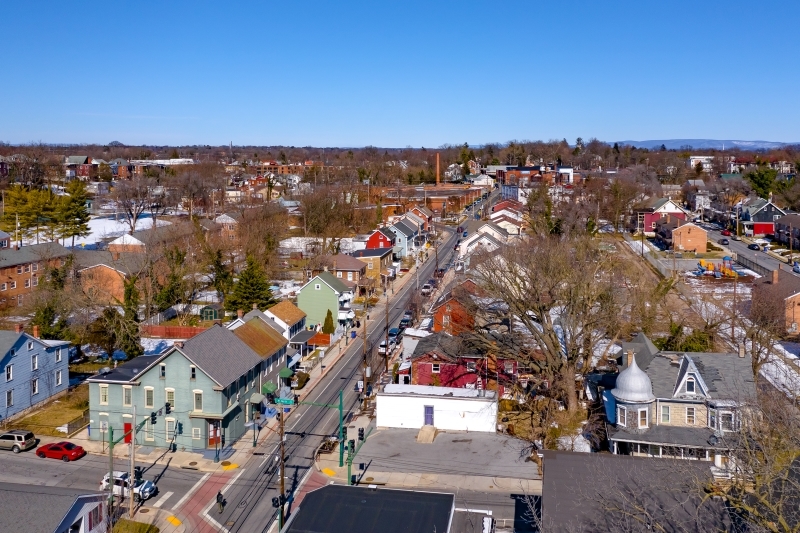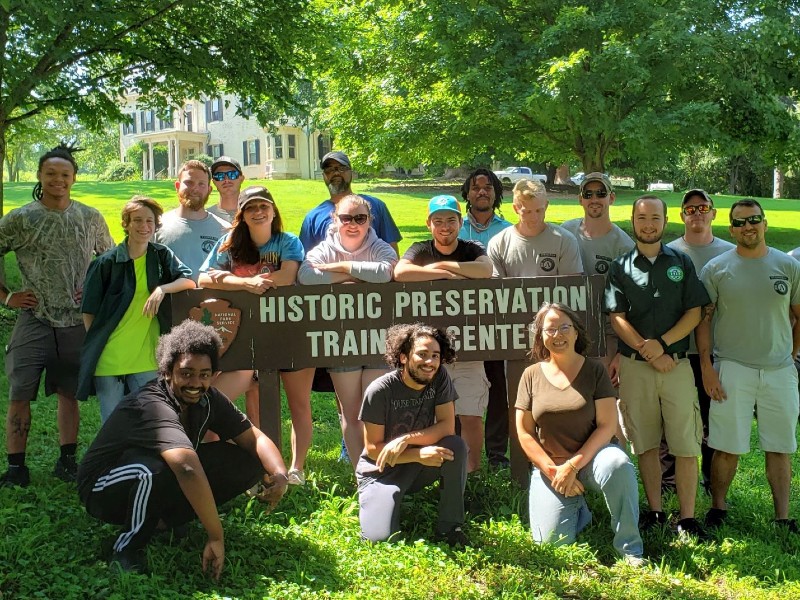A note from Preservation Maryland President & CEO Nicholas Redding
As National Preservation Month comes to an end, I wanted to take this opportunity to reflect on the broad, enduring and tangible impacts preservation is having across our state and the nation. Far from just protecting grand homes, historic preservation has long since embraced a larger vision of this work and preservation as a tool for building dynamic, just and sustainable communities on a foundation of historic places.

Historic Jonathan Street neighborhood, AAIC Visual Perceptions.
Take for example Preservation Maryland’s work in the Jonathan Street neighborhood of Hagerstown – one of the state’s oldest African American communities. There, the organization acquired a historic log cabin threatened with imminent demolition – but rather than just saving the building – the project will now result in owner-occupied affordable housing, in turn helping to build equity and pride in the long-disinvested community. Saving this humble 800-square-foot cabin, now believed to be one of Jonathan Hager’s original residences, has also catapulted a new conversation around revitalization in the community and helped to launch the Western Maryland Community Development Corporation – an organization equipped to carry on the work well into the future.
Preservation is revitalizing and investing in equitable outcomes – and using the best of our past to support that work.
In Baltimore, one need only look to the largest deals and projects completed in the last year to see the enduring and powerful impact of preservation. From the Hebrew Orphan Asylum to the Ministry of Brewing – some of the city’s latest and most exciting development projects focus on the reuse of historic places. In addition to being anchors for revitalization, historic places also come imbued with a sense of character impossible to recreate in new construction. Perhaps, it’s no surprise then, that the city’s most beloved neighborhoods, restaurants, museums and shops all seemingly have one thing in common: they’re located in historic places. In turn, all of this tangible restoration work adds properties back to the tax rolls – reducing the burden of every city taxpayer and paying for the services that residents depend on.

Southway Builders at Hebrew Orphan Asylum rehabilitation project in Baltimore, MD.
Beyond the physical power of preservation, there’s also the value of preservation as a workforce development tool, an issue and a cause Preservation Maryland is proud to be leading at the national level. Since the launch of the Campaign for Historic Trades, a partnership with the National Park Service’s Historic Preservation Training Center, Preservation Maryland has embarked on an effort to establish first-of-their-kind registered apprenticeships for several historic trades. Without the trained hands to complete this work there can be no revitalization or restoration. Building out this program is creating a new pathway for viable careers in the trades. As a nation, we can’t simply build our way out every problem – and we need to be able to reuse our existing building stock. From affordable housing to climate change, it’s imperative that reuse is part of our playbook and the preservation community, again, is leading the way on this critical issue.
Perhaps, though, one of the most compelling values of preservation at this moment, as the nation grapples with the confounding legacies of history, is in telling the full and unadulterated story of our past. Preservation, when done correctly, provides concrete opportunities to explore, embrace and confront our past – and, in turn, to see each of us, no matter our background, reflected in that past. From documenting the LGBTQ history of Maryland to laser scanning sites of the Underground Railroad – preservationists in Maryland are working to put diverse stories at the center of the conversation. Representation matters – in the present and the past – and the preservation community is making this a central tenet of its ongoing work.

Trainees at the National Preservation Training Center, 2019.
Preservation has been said to engage the present in a conversation about the past for the benefit of the future. History remains a guide, beckoning us back with lessons for the days ahead. Preservationists are working to make sure those lessons have a place to live on.
Thank you for celebrating with Preservation Maryland this month as we continue to honor Maryland’s irreplaceable heritage.
